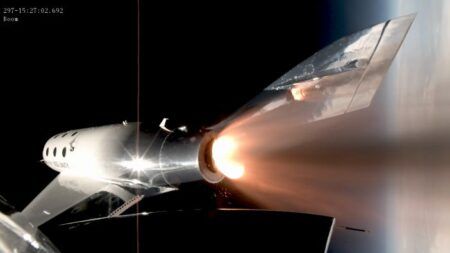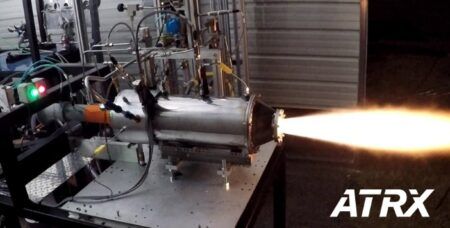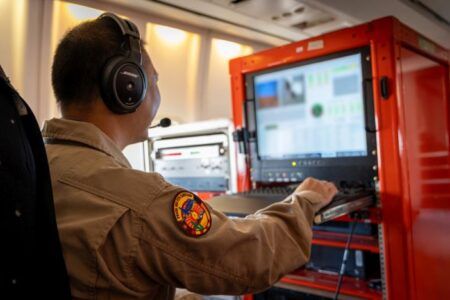Rocket developer Skyrora has conducted a full duration upper stage static fire test at their engine development complex in Fife, Scotland, calling the test a significant milestone and the first time a “mission ready” vehicle of its kind has been developed in the UK.
The static fire test consisted of a 450 second burn over three firings of the upper stage of its Skyrora XL orbital-class vehicle with a fully-integrated setup of the engine, feed systems, avionics, and the software.
Skyrora XL third stage is a mission-ready Orbital Transfer Vehicle (OTV) that can perform a number of in-space missions once it has delivered its payload, including the replacement of redundant satellites or the removal of space debris.
This latest test firing is a milestone for the company because the test subject was setup as it would be when launched – a full integration of the engine, the flight-weight structure and feed systems, flight-grade avionics and the flight computer software. During the test the engine and fluid systems, the flight software and vehicle structure were verified by performing a full set of engine burns and vehicle manoeuvres that simulate the flight of the upper stage in orbit above Earth.
This test also confirmed the readiness of the operations team in full-scale test operations, the manufacturing teams in their ability to produce flight-grade vehicles and is the final checkpoint prior to flight readiness.
Skyrora’s CEO, Volodymyr Levykin said, “Our goal was always to be mission ready once all the regulations and permissions were in place, and this development not only brings us closer to that point but also takes us beyond simply launch readiness.
“We have been deliberately quiet about this aspect of our Skyrora XL launch vehicle as we had technical challenges to get it to this stage and we wanted to ensure all tests had a satisfactory outcome, which they now have. With the current climate and a real shortage of good news, we feel it is the right time to share this with the world.
“We aim not only to conduct efficient launches from UK soil in the most environmentally friendly way, but ensure that each single launch mission has the possibility of conducting the level of work that would have historically taken multiple launches. With this approach, we enter a whole new level of efficiency with full consideration of environmental impact taken into account”.
The vehicle has the ability to refire its engine several times and conduct multiple missions during one trip, making missions highly configurable and suitable for a wide envelope of customer requests and flight plans.
The company believes the extra functionality of the third stage will serve a growing demand for in-space operations as the number of small satellites in orbit around Earth continues to grow this decade.
Skyrora’s head of engineering, Dr Jack James Marlow said, “Despite global challenges, we have completed every milestone we had set out to achieve this year. This puts us in a great position to start 2021 and expand our operations with increased manufacturing, vehicle launches and more Skyrora XL stage testing”.
The Skyrora XL upper stage is powered by a 3D printed 3.5kN liquid engine with multiple ignition capability. Orientation control is provided by engine gimballing and cold gas thrusters. The main structure and tanks are manufactured from carbon fibre making it extremely light and reducing the quantity of fuel required during its journey.




